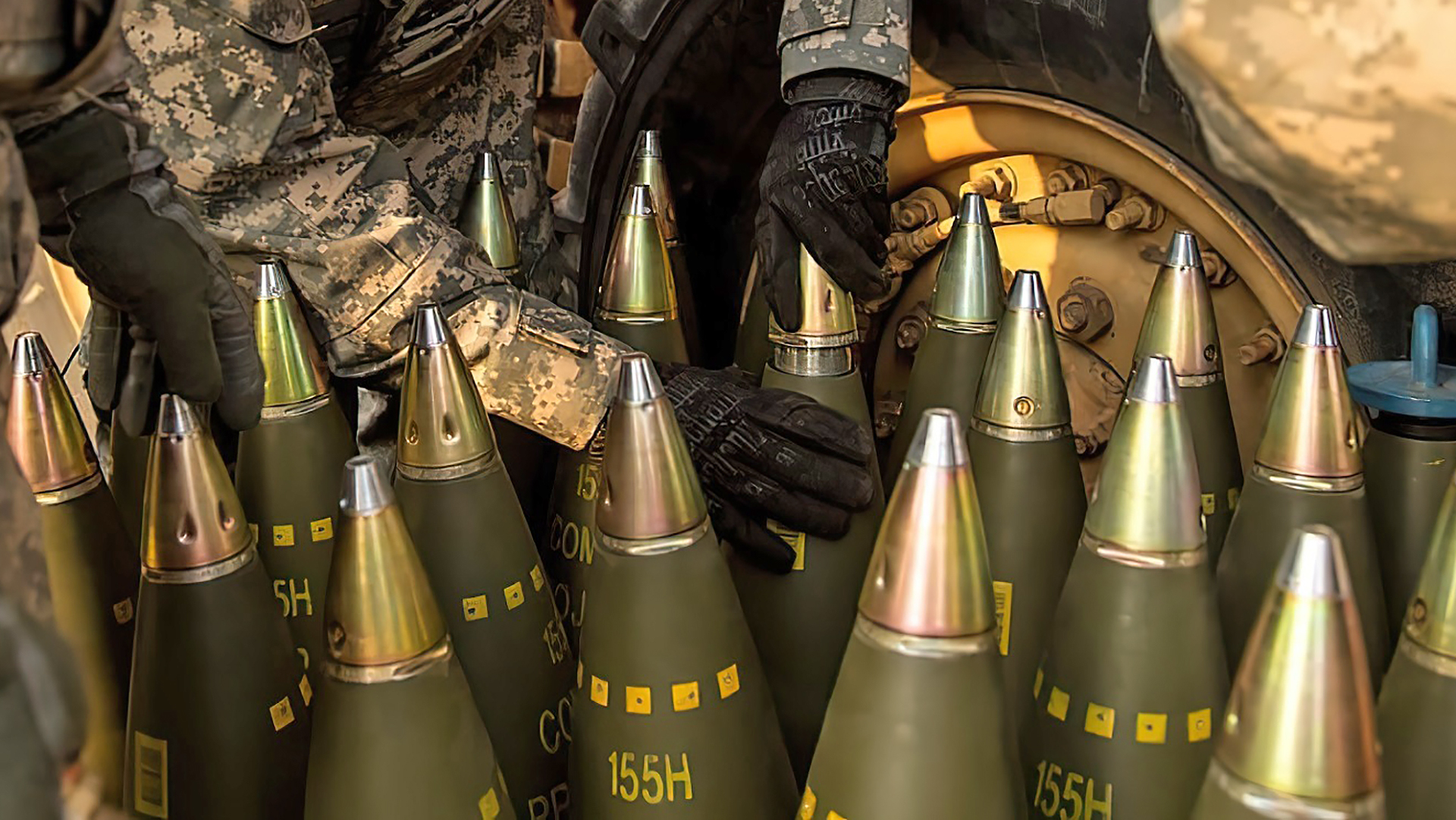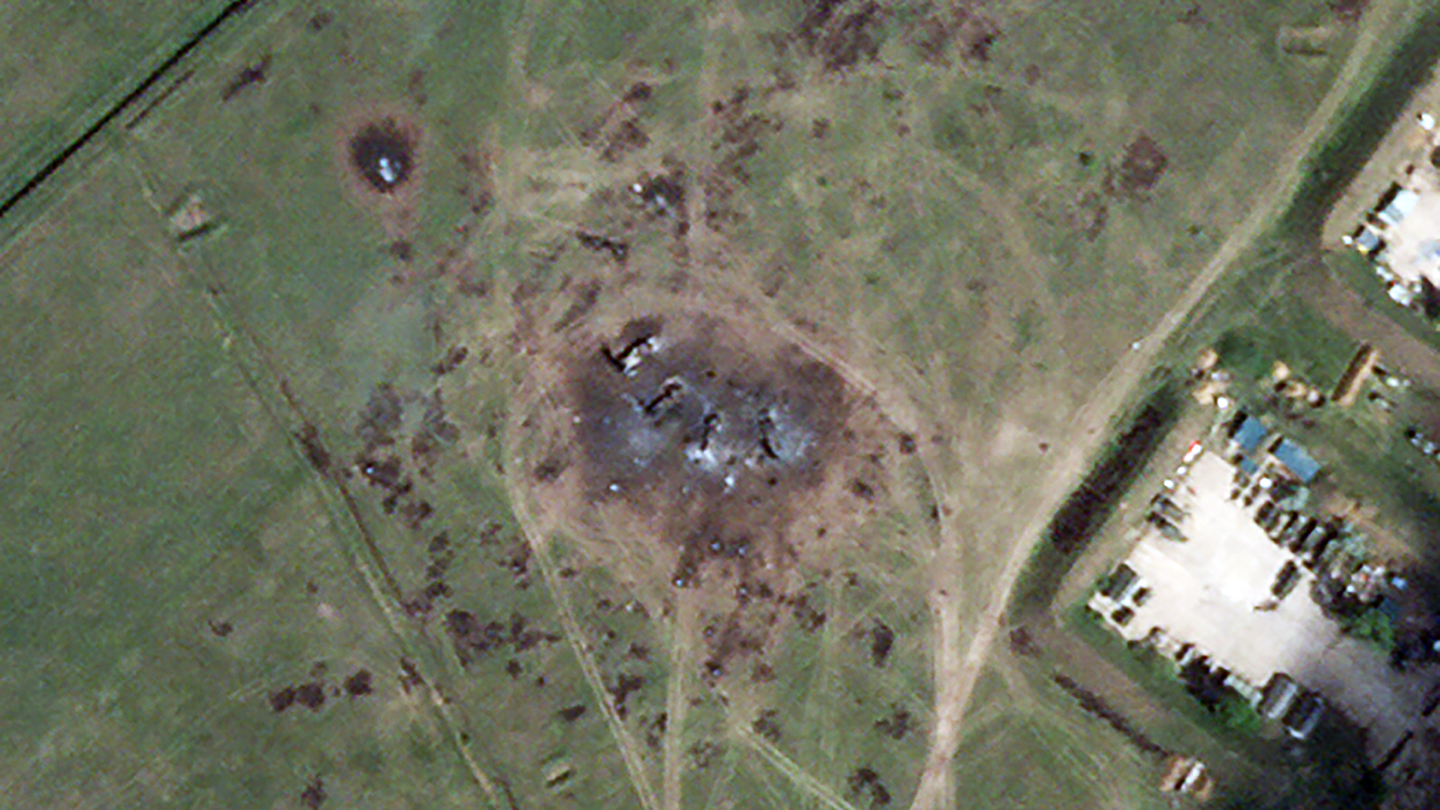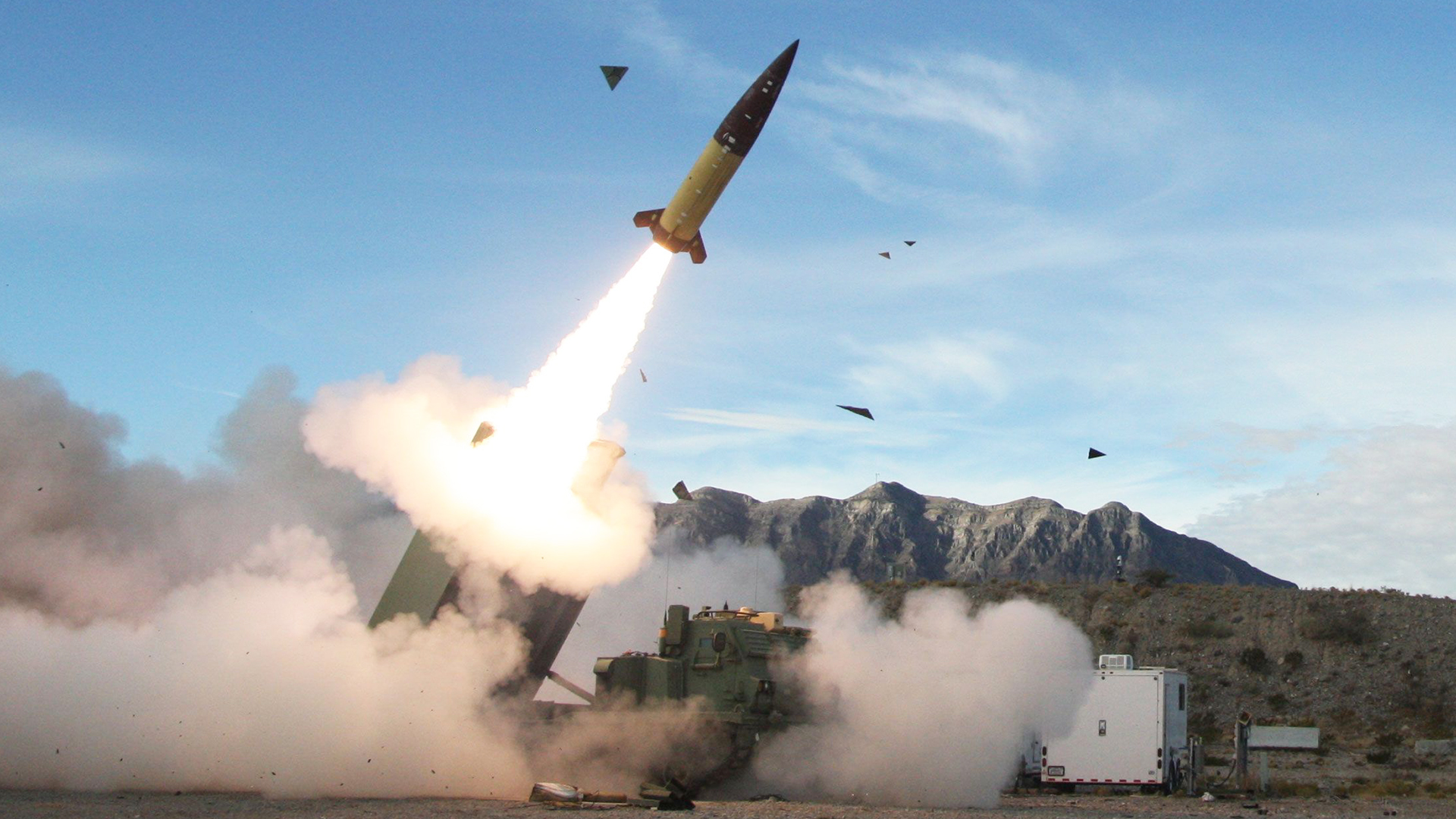The Pentagon on Wednesday announced a new $1 billion package of arms for Ukraine, which includes badly needed artillery rounds, munitions for U.S. donated M142 High Mobility Artillery Rocket Systems, or HIMARS and air defense systems. At the same time, it is coming to light that the U.S. has already supplied additional ATACMS ballistic missiles to Ukraine, and reportedly, for the first time, longer-range variants, under a secret transfer operation, the works of which we have seen recently.
The announcement came moments after President Joe Biden said during a White House speech that he had signed into law a $95 billion national security supplemental aid package that includes about $61 billion for Ukraine. It passed the House on Saturday, and the Senate approved it Tuesday.

The equipment, much of it already stationed in neighboring European countries, is expected to start flowing into Ukraine quickly, Biden said.
“I’m making sure the shipments start right away,” said Biden. “In the next few hours, literally in a few hours, will begin sending equipment to Ukraine for air defense munitions, for artillery for rocket systems and armored vehicles.”
The new Pentagon aid package is the 56th round tranche of equipment provided from the Defense Department to Ukraine under Presidential Drawdown Authority, which means it is coming from existing U.S. stocks.
The capabilities in this announcement include:
- RIM-7 and AIM-9M missiles for air defense;
- Stinger anti-aircraft missiles;
- Small arms and additional rounds of small arms ammunition, including .50 caliber rounds to counter Unmanned Aerial Systems (UAS);
- Additional ammunition for High Mobility Artillery Rocket Systems (HIMARS);
- 155mm artillery rounds, including High Explosive and Dual Purpose Improved Conventional Munitions rounds;
- 105mm artillery rounds;
- 60mm mortar rounds;
- Bradley Infantry Fighting Vehicles;
- Mine Resistant Ambush Protected Vehicles (MRAPs);
- High Mobility Multipurpose Wheeled Vehicles (HMMWVs);
- Logistics support vehicles;
- Tactical vehicles to tow and haul equipment;
- Tube-Launched, Optically-Tracked, Wire-Guided (TOW) missiles;
- Javelin and AT-4 anti-armor systems;
- Precision aerial munitions;
- Airfield support equipment;
- Anti-armor mines;
- Claymore anti-personnel munitions;
- Demolitions munitions for obstacle clearing; and
- Night vision devices; and
- Spare parts, field equipment, training munitions, maintenance, and other ancillary equipment.

While the Pentagon did not specify which types of HIMARS munitions it will provide Ukraine, the law Biden signed requires the transfer of longer-range Army Tactical Missile System (ATACMS) short-range ballistic missile variants that are fired by HIMARS systems “as soon as practicable.” Those are able to hit targets up to 186 miles (300 kilometers). Previous versions of the weapon sent to Ukraine were earlier types capable of significantly less range, of around 103 miles, and carried only cluster munitions.
CNN reported that the aid package will likely contain the longer-range ATACMS, but additional reporting from multiple outlets now states that those munitions have already been secretly sent to Ukraine.
Ukraine been using the very limited number of these weapons it has received to devastating effect, and most recently used the longer-range variants in an attack on Russian air defense systems in Crimea last week, according to Reuters.
As we noted in our story about that attack, there was a seeming gap in Ukrainian ATACMS launches. The first tranche of about 20 ATACMS short-range variants arrived in Ukraine in October and were apparently mostly used during attacks on Russian-held airfields the same month. Since then, we haven’t seem much evidence that additional ATACMS were on hand and the lack of U.S. aid supported the idea that no more were handed over. Then the strike on Russia’s airbase occurred, which pointed to a new delivery. So it seems as if additional examples were delivered clandestinely. In addition, today’s media accounts gives added context to previous reports in March that additional (cluster-warhead versions) of ATACMS were headed to Ukraine.

Marine Lt. Col. Garron Garn, a Pentagon spokesman, would not confirm whether the longer-range ATACMS were included in the package or say how many of the other items are heading to Ukraine.
“Unfortunately, we’re not able to provide additional details to what is already listed in the release,” he told The War Zone. “We do not provide the number of munitions, or variants/models in some cases, for operational security considerations and to preserve the tactical advantage for Ukraine on the battlefield.”
Whether the U.S. imposes target restrictions on the use of the longer-range ATACMS if they are provided remains to be seen. Those weapon can hit targets well into Russia as well as all of occupied Crimea and the U.S. in the past has asked Ukraine not use its donated arms against targets across the border.
The package that Biden signed into law Wednesday also includes billions for Israel and Taiwan. It “comes on the heels of an announcement by the U.K. on Tuesday, pledging an additional $620 million in new military supplies for Ukraine, including long-range missiles and 4 million rounds of ammunition,” according to the AP.
The U.S. measure came after months of U.S. internal political turmoil, which delayed support for Ukraine, which is facing an increasingly tough fight.
Ukrainian officials and U.S. backers of the funding measure have been warning that the lack of assistance from Washington has imperiled Kyiv’s forces, which are desperately low on ammunition, particularly 155mm shells and air defense munitions.
Ukraine has seen Russia attempting to make advances across the front, especially in Donetsk Oblast around the towns of Chasiv Yar, Avdiivka and Donetsk City. Those attempts have been helped by Ukrainian ammunition shortages.
With Ukrainian air defense munitions in short supply as well, Russia has been better able to use its tactical aviation to help its ground troops. A recent example is the push toward the town of Ocheretyne near Avdiivka.
“In preparation for this move, Russian aviation conducted air strikes with FAB glide bombs on Ukrainian positions along the planned Russian axis of advance and the Ukrainian-held town of Ocheretyne,” the Ukrainian Euromaidan Press news outlet reported Wednesday.
Russia has also been hitting Ukrainian cities and energy infrastructure with air, sea and ground-launched missiles, as well as drones. While the new aid package does not include Patriot air defense munitions, it does include RIM-7 Sea Sparrow surface-to-air missiles, which as we noted previously were integrated onto the Ukrainian Armed Forces’ existing Soviet-era Buk air defense systems. It also includes AIM-9 Sidewinders, which have been incorporated into so-called FrankenSAM air defense systems. You can read more about those here.
The new package also includes an unspecified number of Bradley Fighting Vehicles. The U.S. has already provided Ukraine with more than 200 Bradleys, but a large number of them have already been lost. According to the Oryx open source tracking group, Ukraine has seen 34 Bradleys destroyed, 24 damaged, 14 abandoned and four captured. Those numbers could actually be higher, because Oryx only tabulates equipment for which it has visual confirmation.
Video of destroyed Bradleys first emerged on social media in June 2023, which you can see below.
Despite the ammo shortages, Ukraine has been able to inflict heavy casualties on Russian forces and, in limited cases, claw back some of its lost ground. However, without needed supplies, it remains questionable how long Ukraine can keep pushing back or defend against an expected increase in Russian offensive operations.
During his speech at the White House, Biden said Ukraine has been holding out despite the delay in U.S. help and while Russia’s allies have been supplying it with arms and assistance.
“Putin’s friends are keeping him well-supplied,” said Biden. “Iran sent him drones, North Korea has sent him ballistic missiles and artillery shells. China has provided components and know how to boost Russia’s defense production. With all the support, Russia has racked up with airstrikes against Ukrainian cities and critical infrastructure. Rained down munitions on brave Ukrainians defending their homeland. And now America is going to send Ukraine supplies they need to keep them in the fight.”
Ukrainian officials have expressed tremendous gratitude for the help.
While the equipment may flow into Ukraine quickly, how soon and how much of a difference it will make remains to be seen.
“So we will see when all this cargo arrives in Ukraine,” Lt. Gen. Kyrylo Budanov, head of the Defense Intelligence Directorate, told The War Zone. “We needed this cargo a long time ago. So it will be like fresh air for us now.”
Contact the author: howard@thewarzone.com
